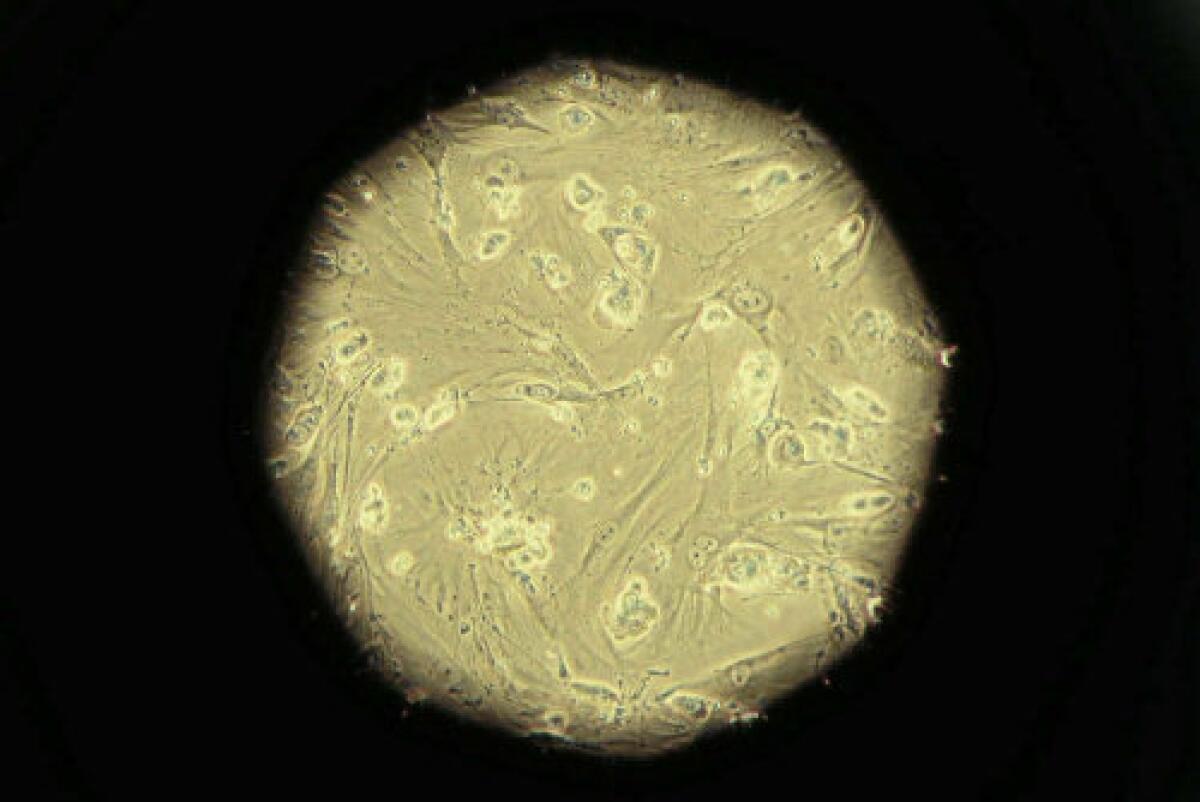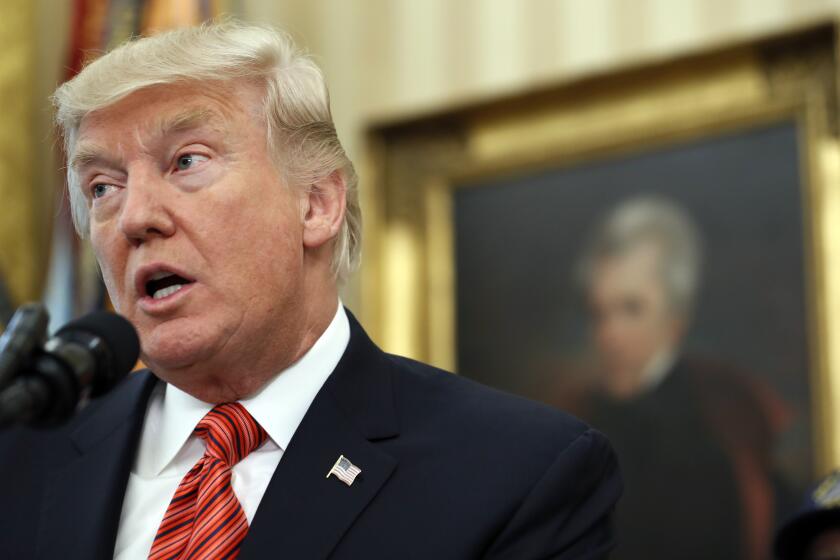Endorsement: No on Proposition 14: It’s not the best way to support stem-cell research

In 2004, after President George W. Bush cut off all federal funding for embryonic stem-cell research on religious grounds, Californians strongly backed Proposition 71, a $3-billion bond measure to fund this kind of research, even though such funding is usually not the purview of states.
Supporters of the proposition — including this editorial board — believed it would allow California to stand out as a leader in this field, advance a budding avenue of research that might save lives and alleviate suffering, bolster its biotech sector and fund possible blockbuster treatments that might earn the state royalties as well. Embryonic stem cells are particularly valuable to research because they are undifferentiated, meaning they do not have a particular function, and researchers could conceivably turn them into specialized cells in order to regenerate human cells and tissue.
In the years since, Proposition 71 gave rise to a burst of scientific discovery. Two cancer treatments it helped fund, for blood and bone-marrow cancers, have been approved by the FDA, though neither of those employed embryonic stem cells and could have been funded even under Bush administration rules. It has also supported promising advances in the treatment of diabetes, “bubble boy” immune deficiency and vision-robbing retinitis pigmentosa, but other efforts have fallen short in clinical trials.
Moreover, the money helped build laboratories and other infrastructure that give California a head start on research and development, making the state the “it” place for stem-cell research. Researchers in the state moved to the head of the pack for private grants, because projects are less likely to need the time and money to create facilities before work can begin.
Now that Proposition 71 funding has practically run out, the issue is back on the November ballot with Proposition 14, which seeks nearly double the amount worth of bonds — $5.5 billion — to continue the juggernaut.
This time, voters should reject the measure, with the caveat that the issue could be reconsidered in a couple of years, if its proponents bring it back in better-designed and more modest form and if there are more successes in human trials and financial payback.
We have long had reservations about how the California Institute for Regenerative Medicine, established as a result of Proposition 71, was set up. Though funded publicly, it is not overseen by the governor and Legislature like other state agencies, and its governing board is too large, at 29 members. Those members generally have ties to the advocacy organizations and research institutions that have received most of the money.
The driving force behind the initiative has been Robert N. Klein II, a Bay Area lawyer and real estate investor. There is no doubting Klein’s sincerity in his cause. He knows too well the suffering inflicted by intractable diseases; his son Jordan died of complications of Type I diabetes in 2016. His accomplishment in persuading the state to invest billions in a specific avenue of biomedical research has been exceptional.
However, Klein developed these initiatives largely behind closed doors with little to no public input; he has strong ideas about how things should be run on the stem-cell front and has steadfastly resisted more government oversight. That’s fine when he’s investing his own money; it’s a fatal flaw when he is asking voters for nearly $8 billion, the estimated cost of paying off the bonds over time, according to the Legislative Analyst’s Office.
Klein’s role and the bloated structure of CIRM’s super-sized governing board have given rise to some serious ethical mishaps, including a board member who improperly intervened to try to get funding for his organization. (He is no longer on the board.) After this and several other examples of impropriety, rules were tightened. Board members must recuse themselves from votes when there is a conflict of interest, but with 29 members who all want certain projects to receive funding, there is too much potential for mutual back-scratching. Instead of repairing this problem, the new proposition would expand CIRM’s board to 35 members and retain its troubling independence from oversight by the governor and Legislature, leaving it open to further conflicts of interest.
Proposition 71 hasn’t yet yielded a significant financial return on investment for the state — or the cures that were ballyhooed at the time. Though no one ever promised quick medical miracles, campaign ads strongly implied they were around the corner if only the funding came through. Proponents oversold the initiatives and voters can’t be blamed if they view this new proposal with skepticism.
In the years since Proposition 71 passed, more resources have become available. President Obama reversed Bush’s order and restored federal funding, which meant that between CIRM and the National Institutes of Health, along with private grant and investment funding, stem-cell research has been healthy, if not downright flush. That funding has stayed and even grown under President Trump, to more than $2 billion a year, with about $321 million of that in human embryonic stem-cell research. (There have, though, been recent threats to embryonic research from a group of conservative senators.)
The idea was never for California to become the long-term replacement for federal funding. It was to kick-start an industry that would then operate on its own. If that has failed to happen under Proposition 71 as promised, it shouldn’t be the responsibility of California taxpayers to fix it. That’s especially true right now, at a time of yawning needs to address the cost of twin health and economic crises and the worsening effects of climate change. Private money for stem cell-work will continue to be available; it’s not as though research will collapse.
No doubt, the pace of responsible science is incremental and the outcomes uncertain even with the best research efforts. Yet the backers still couch the possibilities in grandiose terms. In a recent interview with the Times editorial board, Klein talked about the money that would be saved by wiping out Alzheimer’s disease — which has so far has frustrated attempts to treat it effectively, despite many billions of dollars in research.
Embryonic stem cell research remains important, and there might be ways in which the state can contribute less grandiose funding while maximizing its investment. For example, scientific research has a well-known “valley of death,” where many projects can’t get funding to make the transition from laboratory to human clinical trials.
Offering some matching help to get projects through that phase might attract businesses and scientists to California, while spending far less than the billions proposed in Proposition 14. It’s worth noting that stem-cell work isn’t the only kind of research that faces the valley of death problem; it’s an issue for most basic research that seeks to make the leap to human trials and that might be equally in need of state help.
Now is not the time for a huge new investment in specialized medical research. First, it makes sense to wait until after the election; if Democrats do well, there should be growing support for embryonic stem-cell research at the federal level, which is where such funding should take place. The future of California’s pandemic-battered economy and budget remains to be seen. Waiting also would give voters a chance to find out how well the state’s stem-cell research projects continue without state dollars, and whether some of the promising advances lead to breakthrough therapies and a return on California’s investment.
There would be an opportunity to rethink and rewrite any future proposals, which should include a far more modest ask of taxpayers as well as fixes to the structure and inflated size of the CIRM board. The institute should also be placed under the same state oversight as other agencies reporting to the governor.
If CIRM needs money for a basic operating budget over the next couple of years, that could be covered by the state’s general fund. The agency still needs to administer already-funded projects and could use that time to discuss a more affordable path forward. Right now, the state has other, more urgent spending priorities.
Editors’ note: This newspaper’s owner, the physician and scientist Dr. Patrick Soon-Shiong, played no role in the editorial board’s deliberations on this measure.
More to Read
A cure for the common opinion
Get thought-provoking perspectives with our weekly newsletter.
You may occasionally receive promotional content from the Los Angeles Times.










